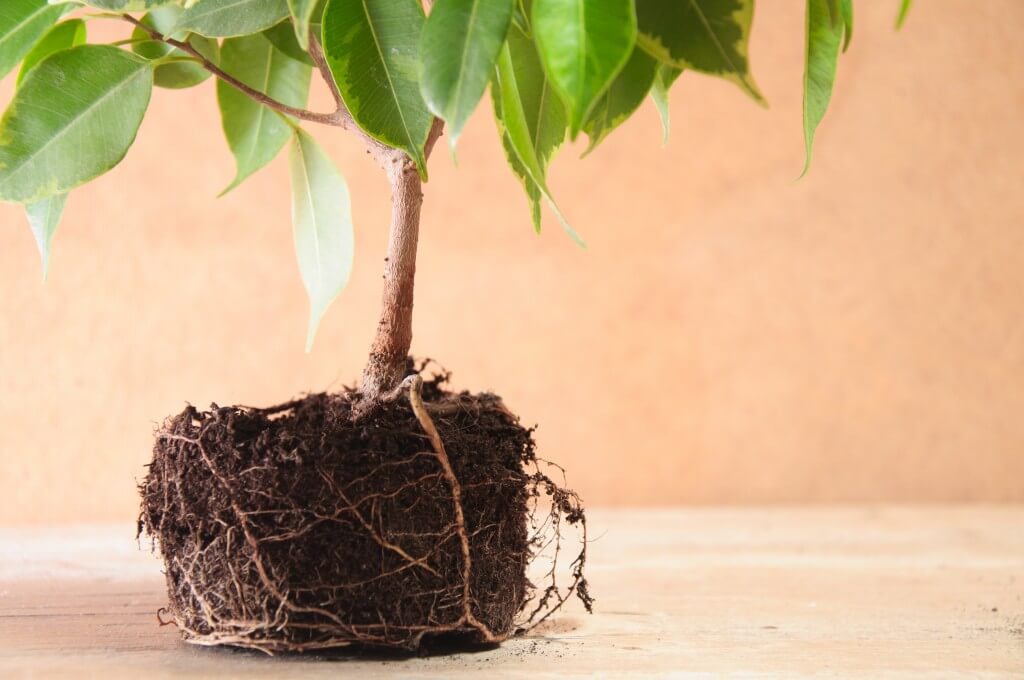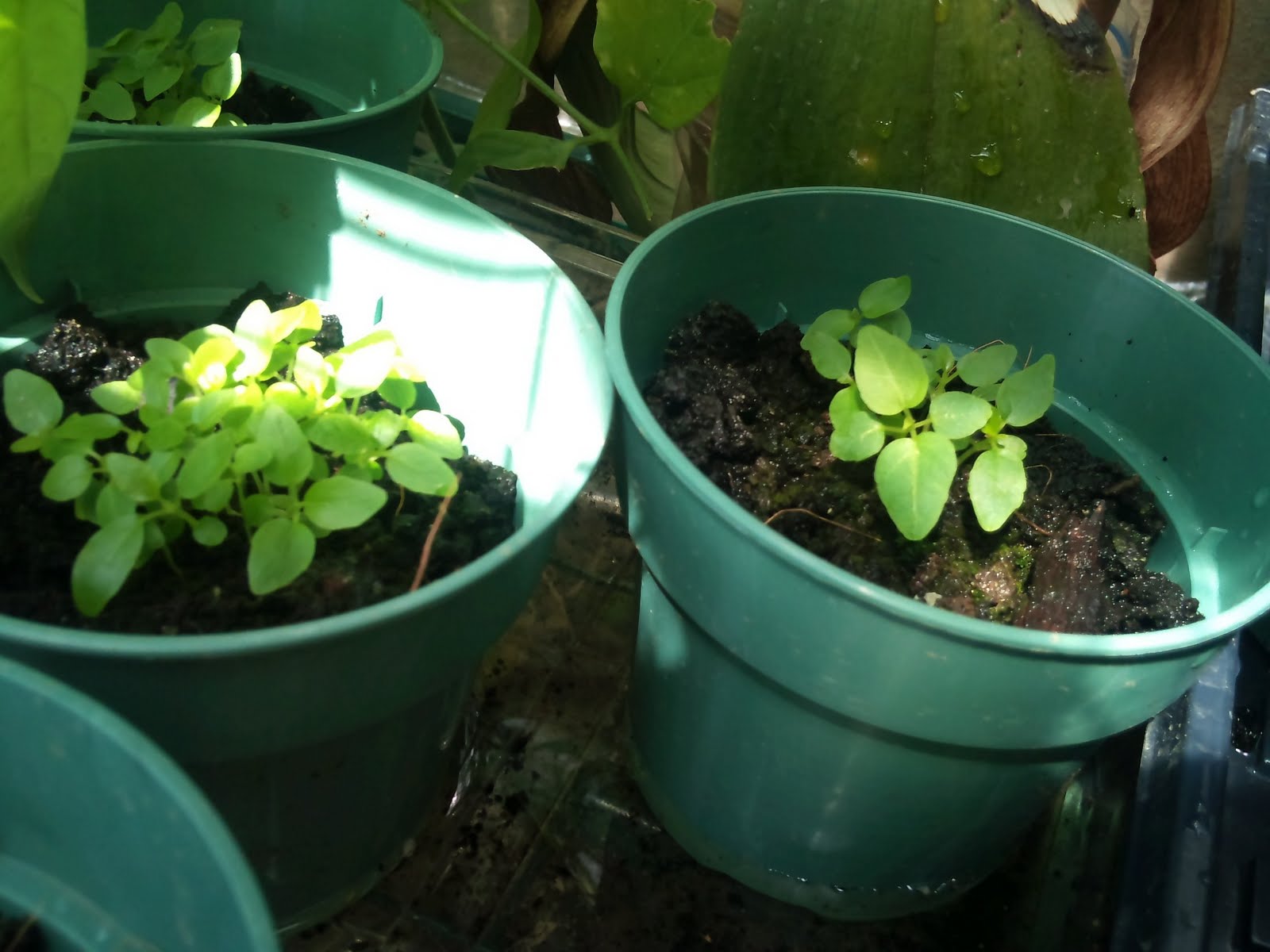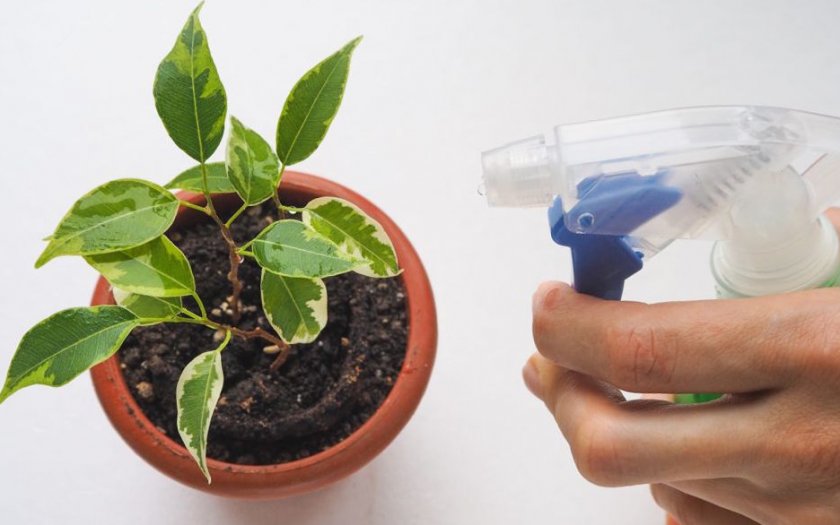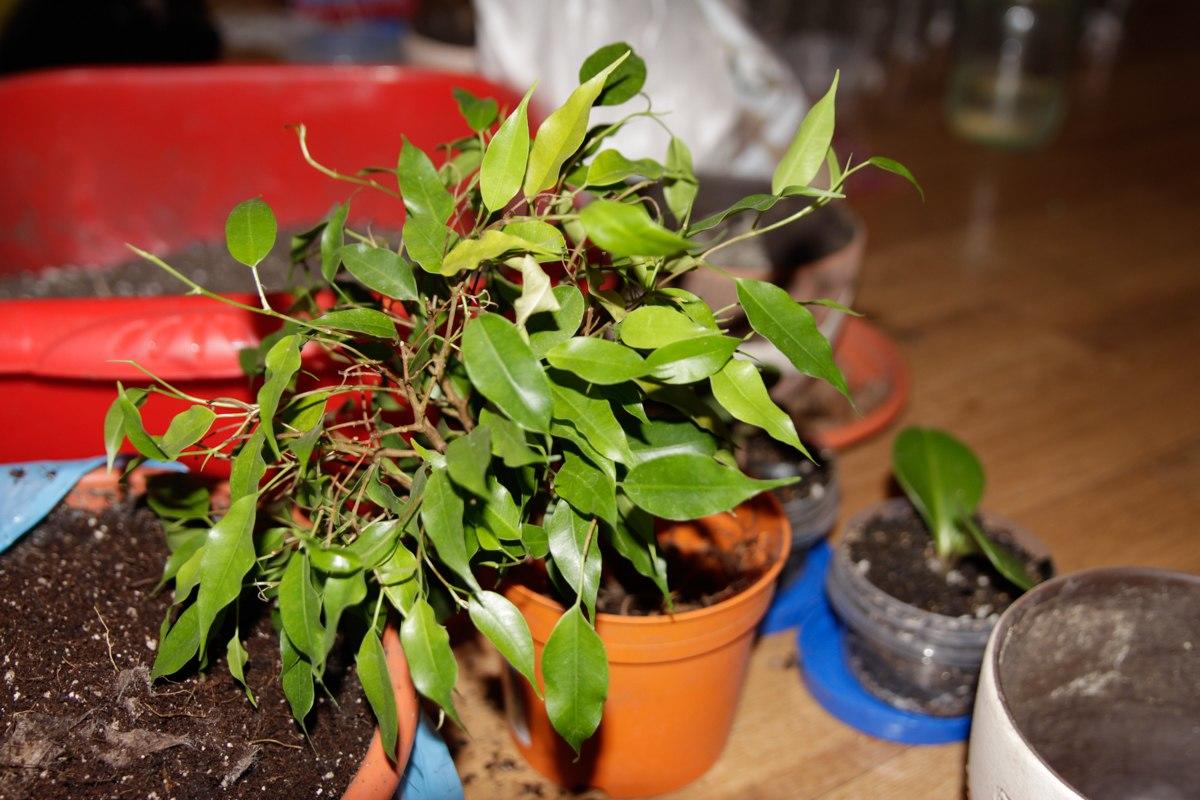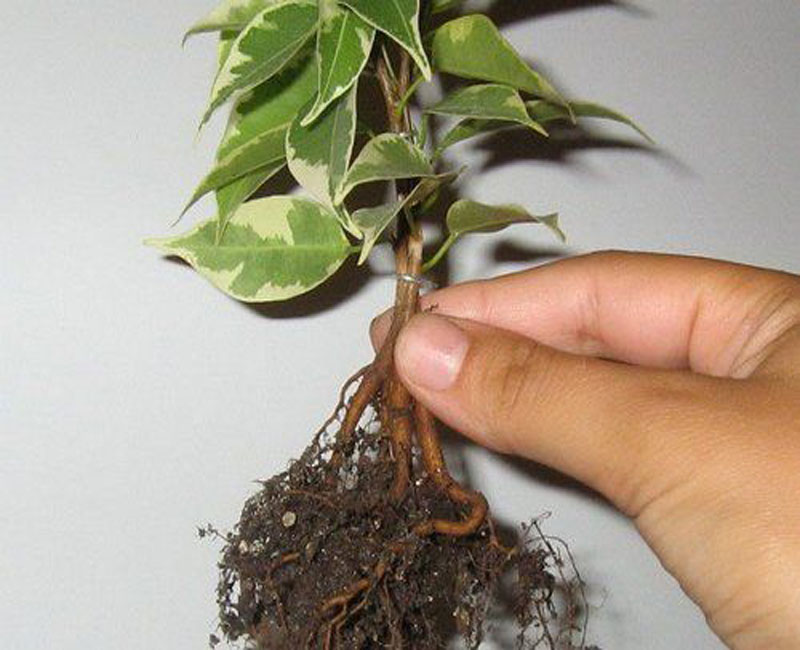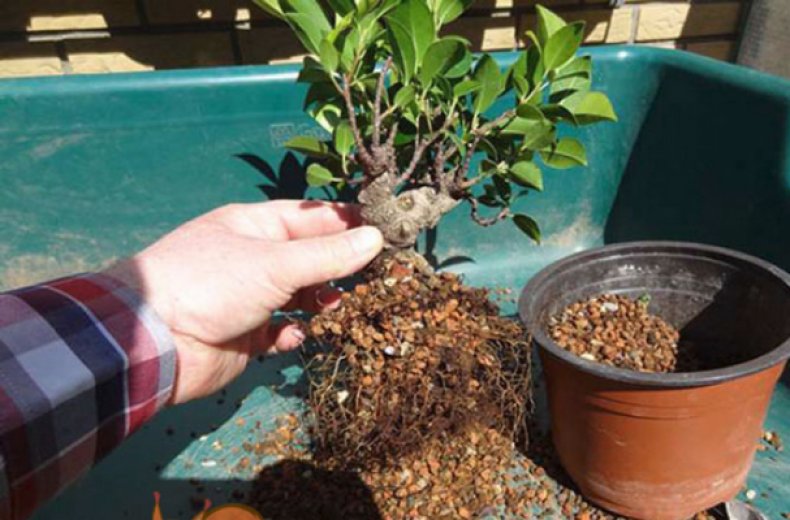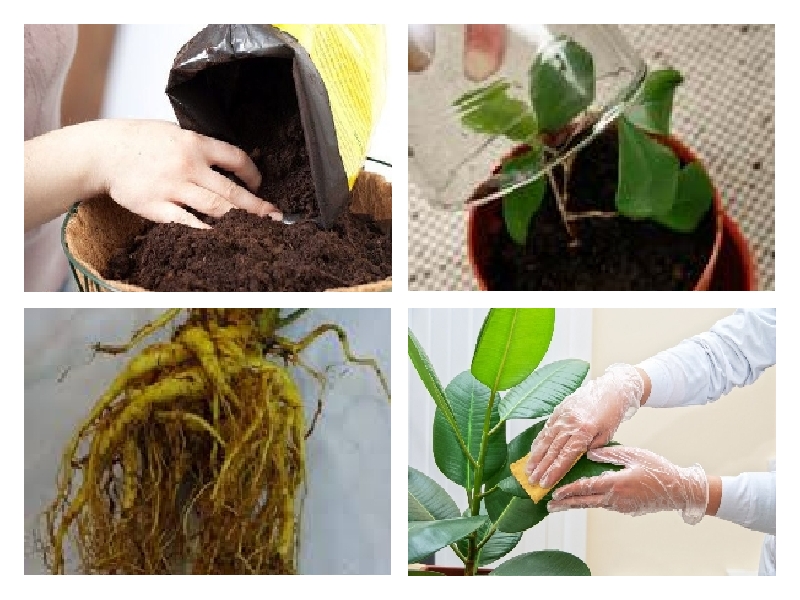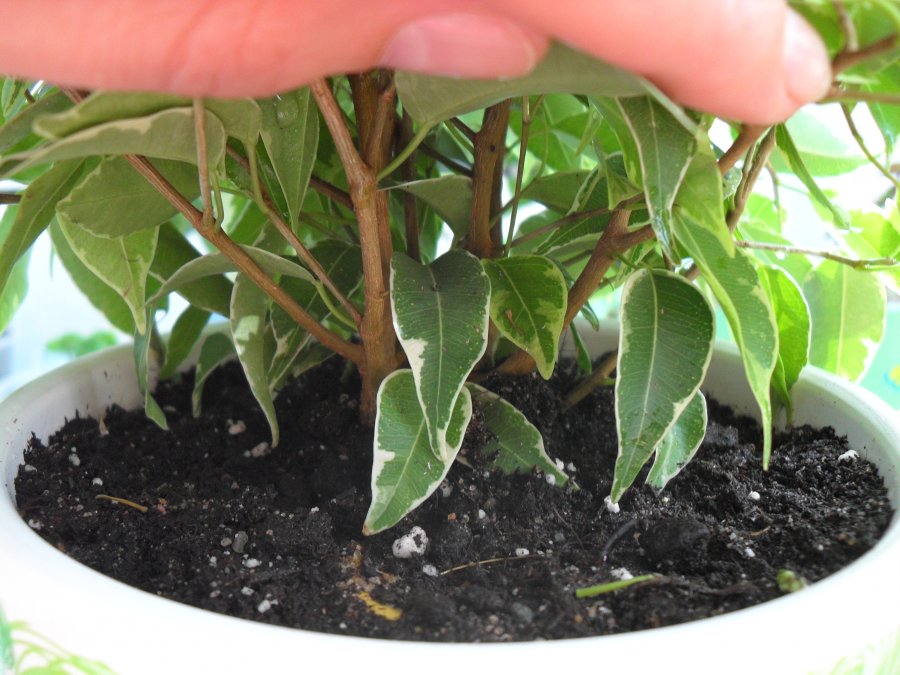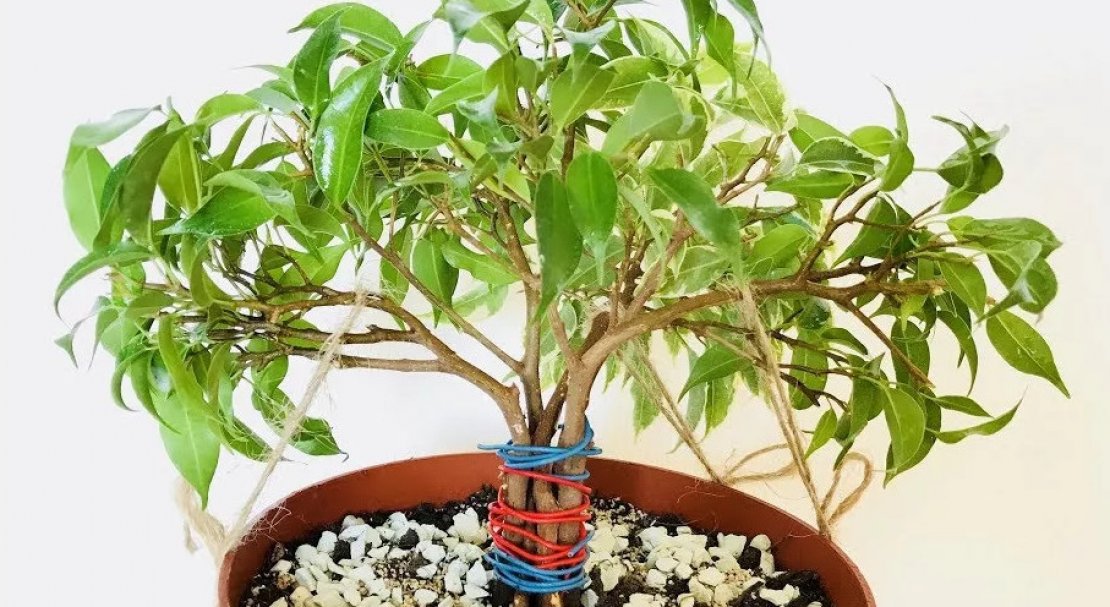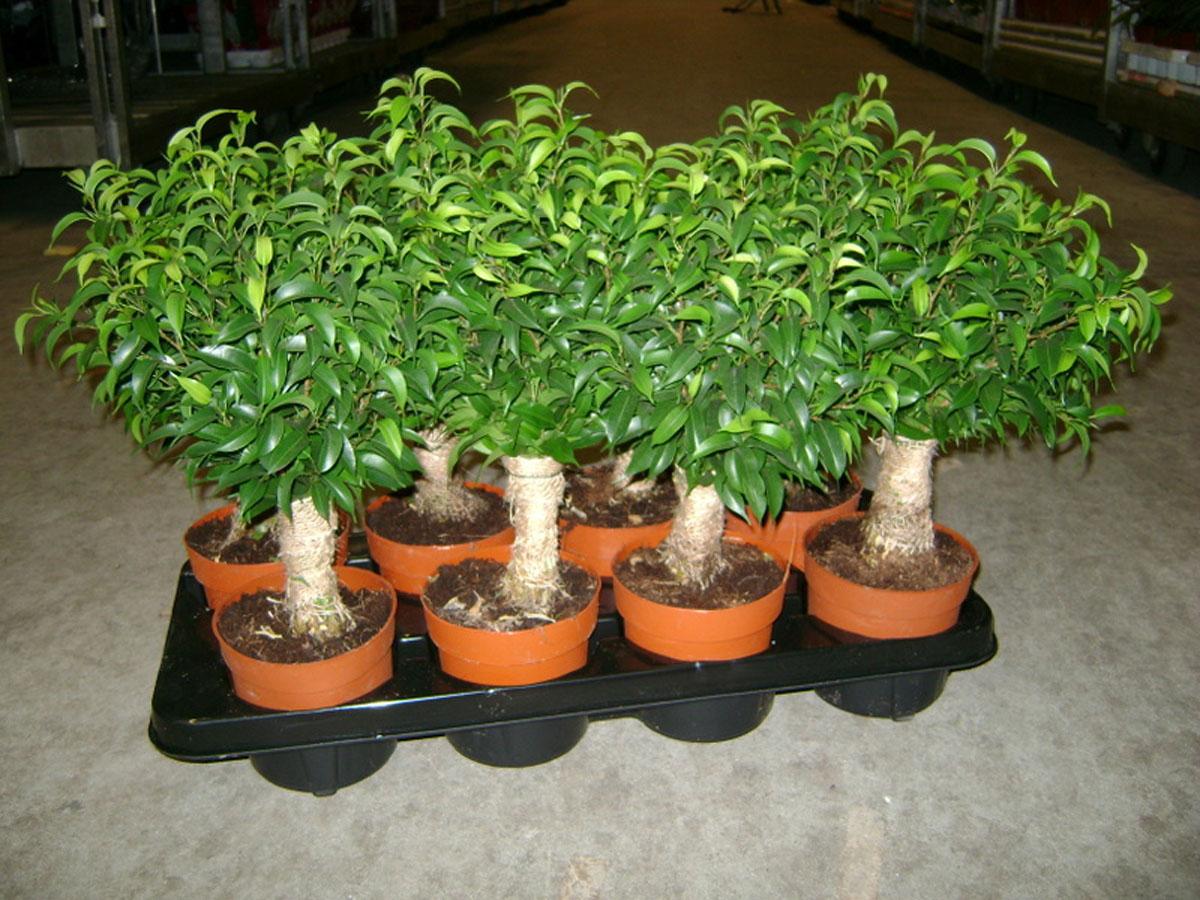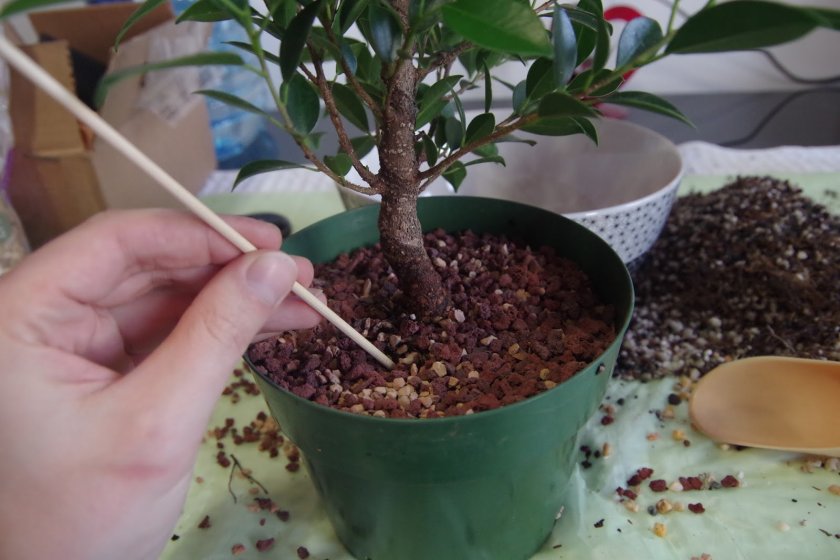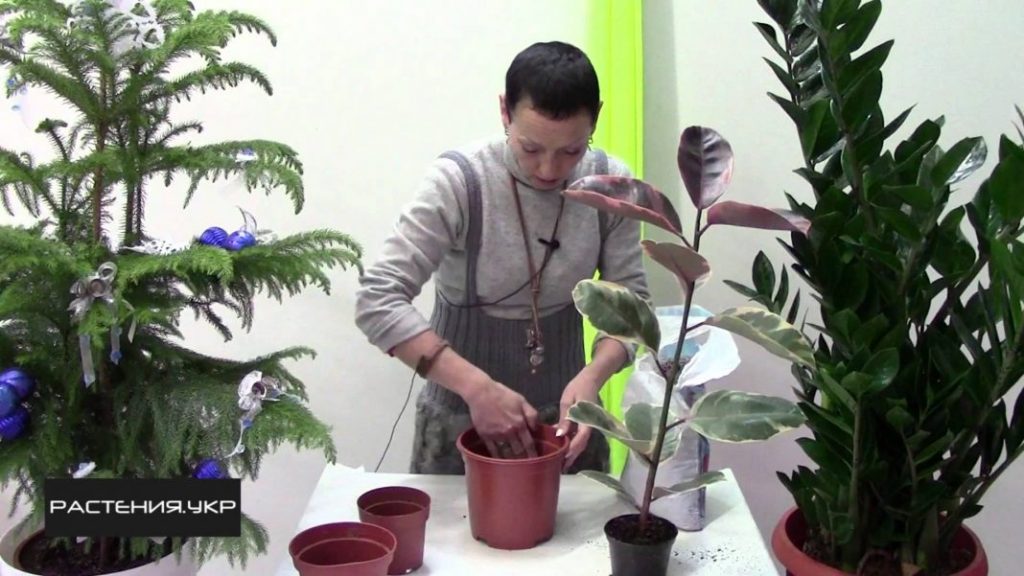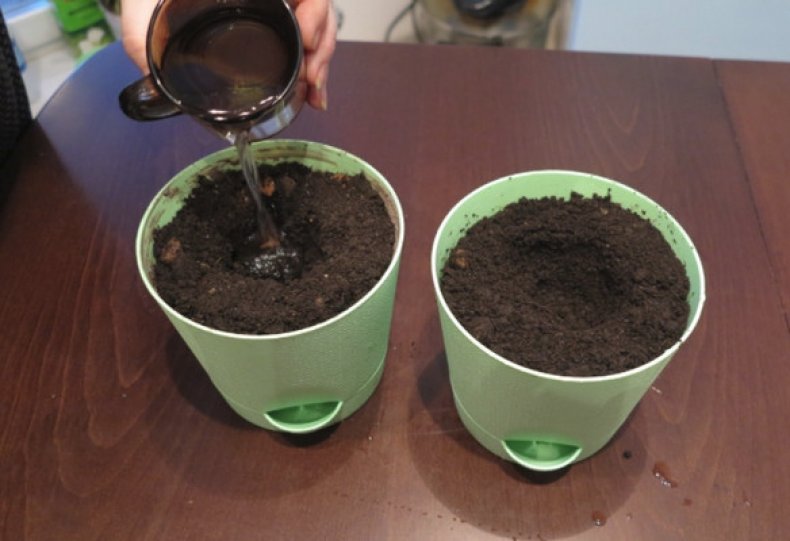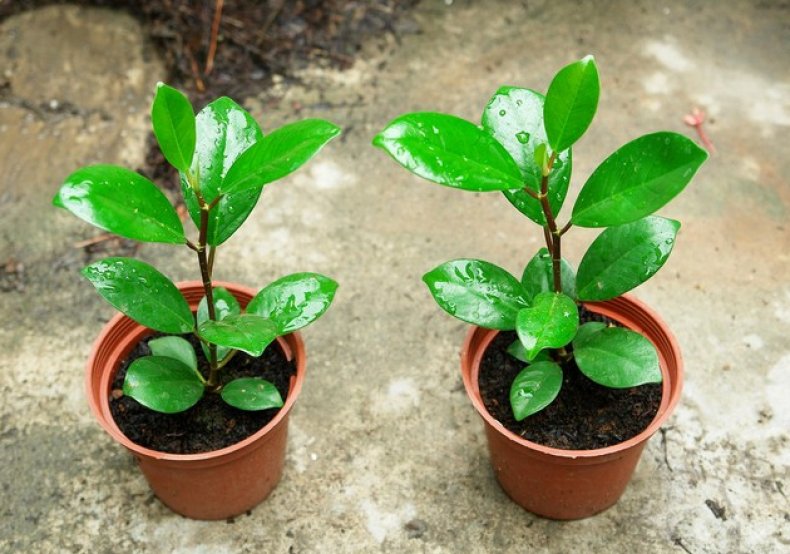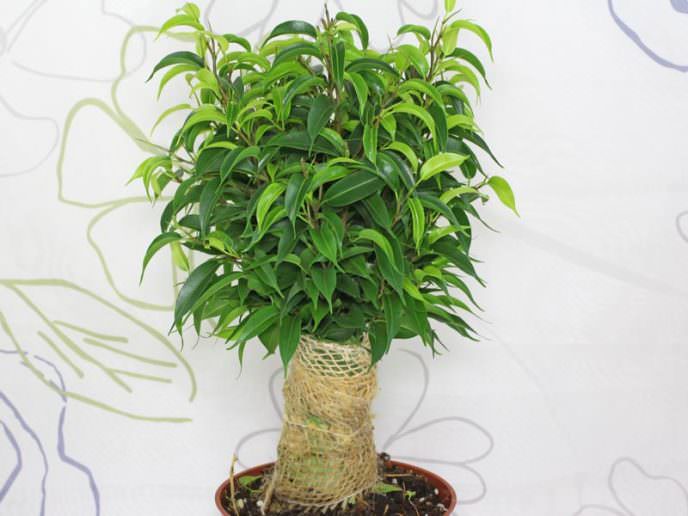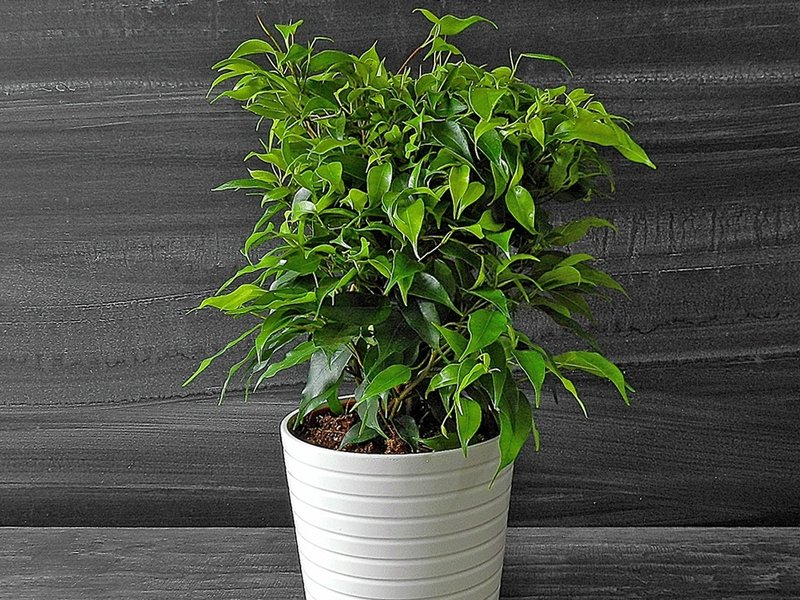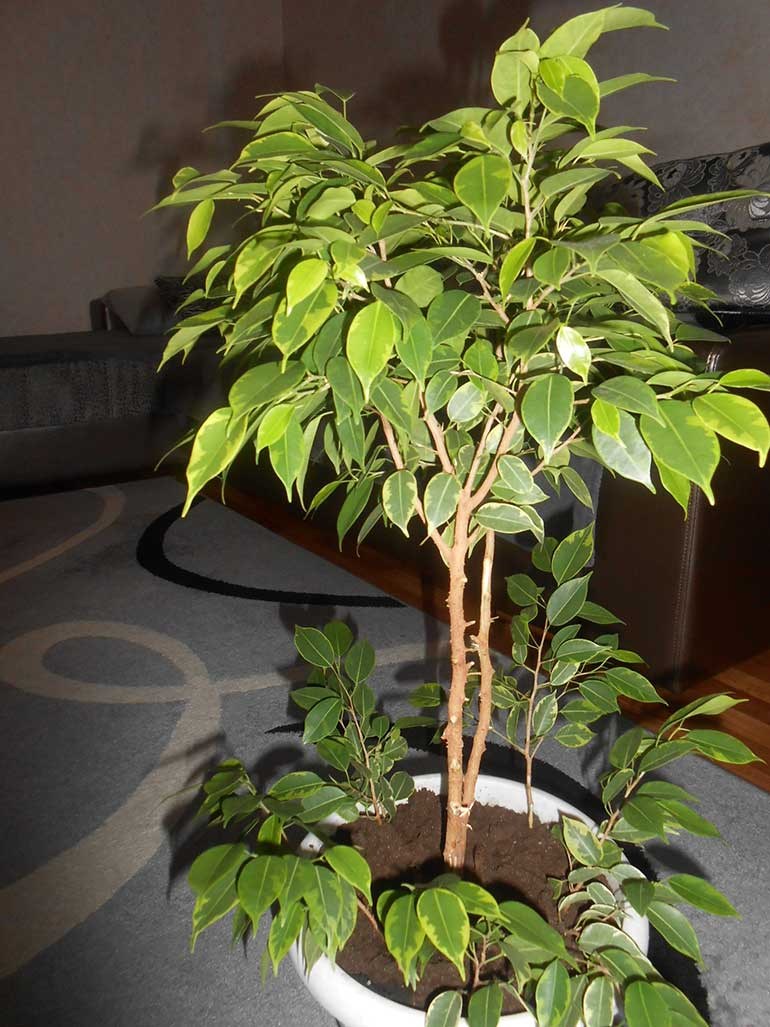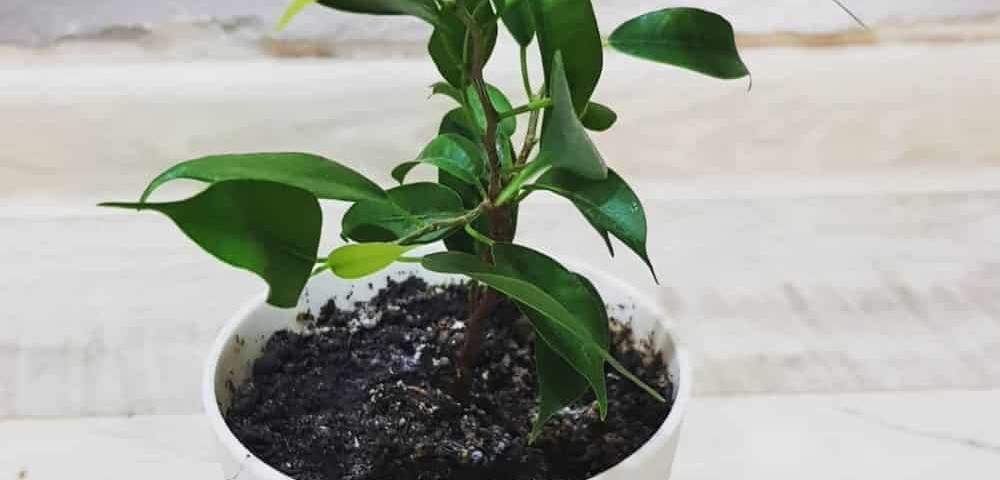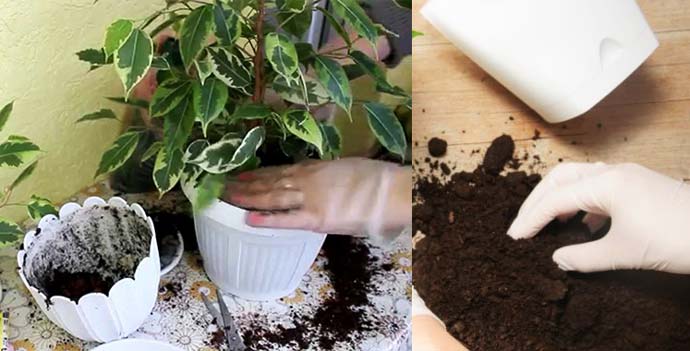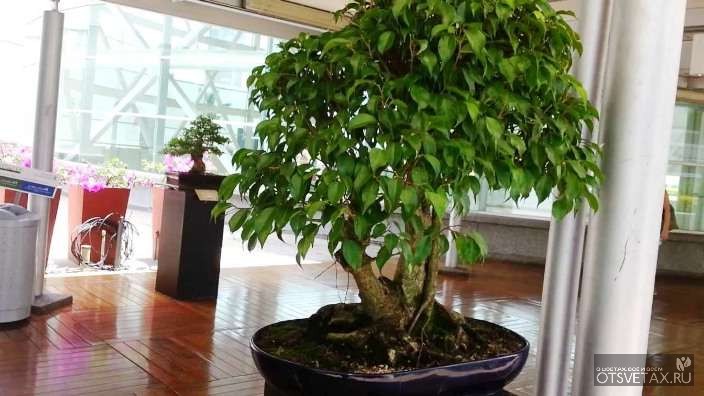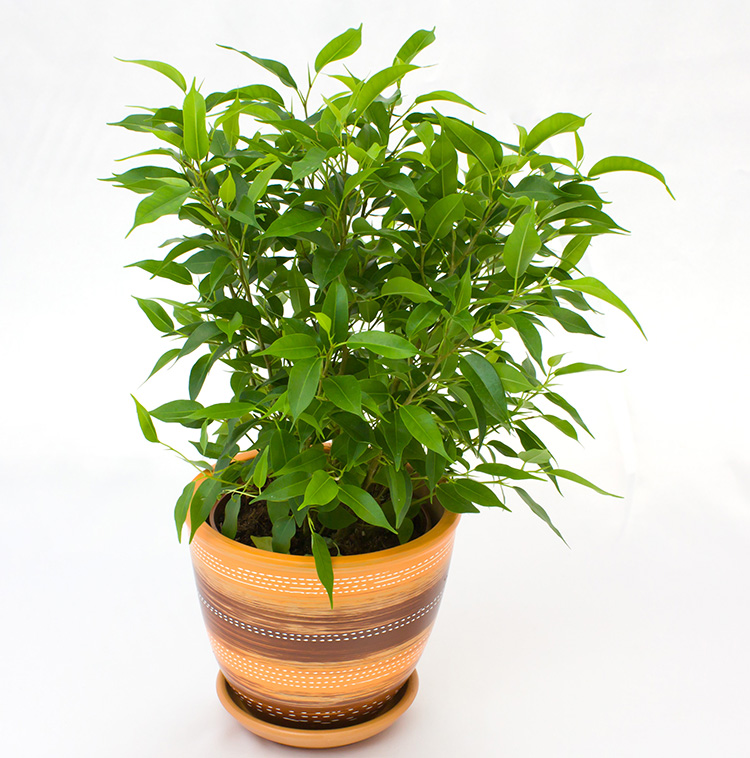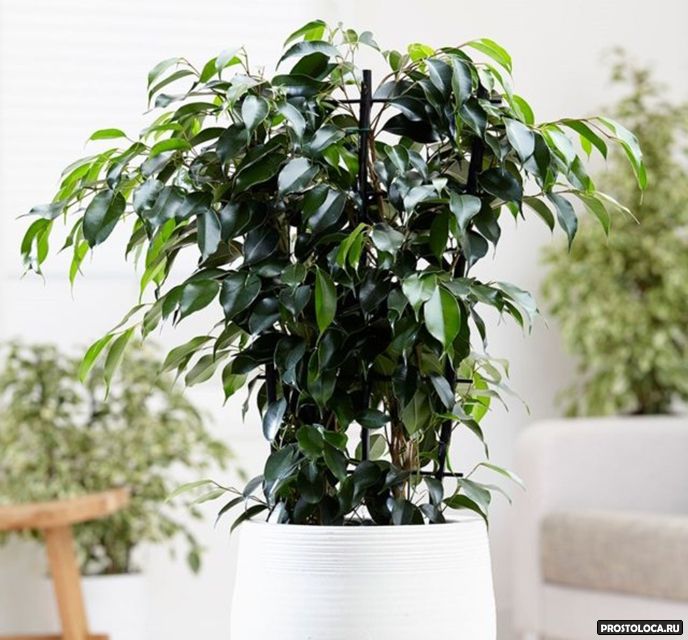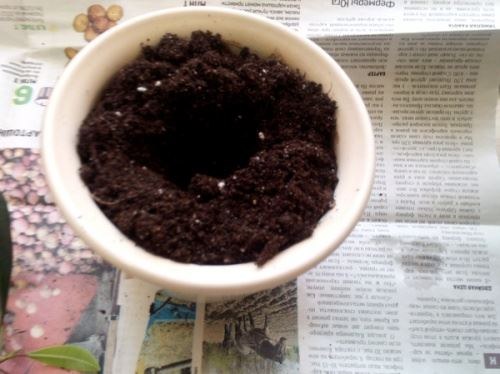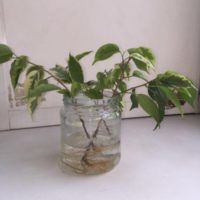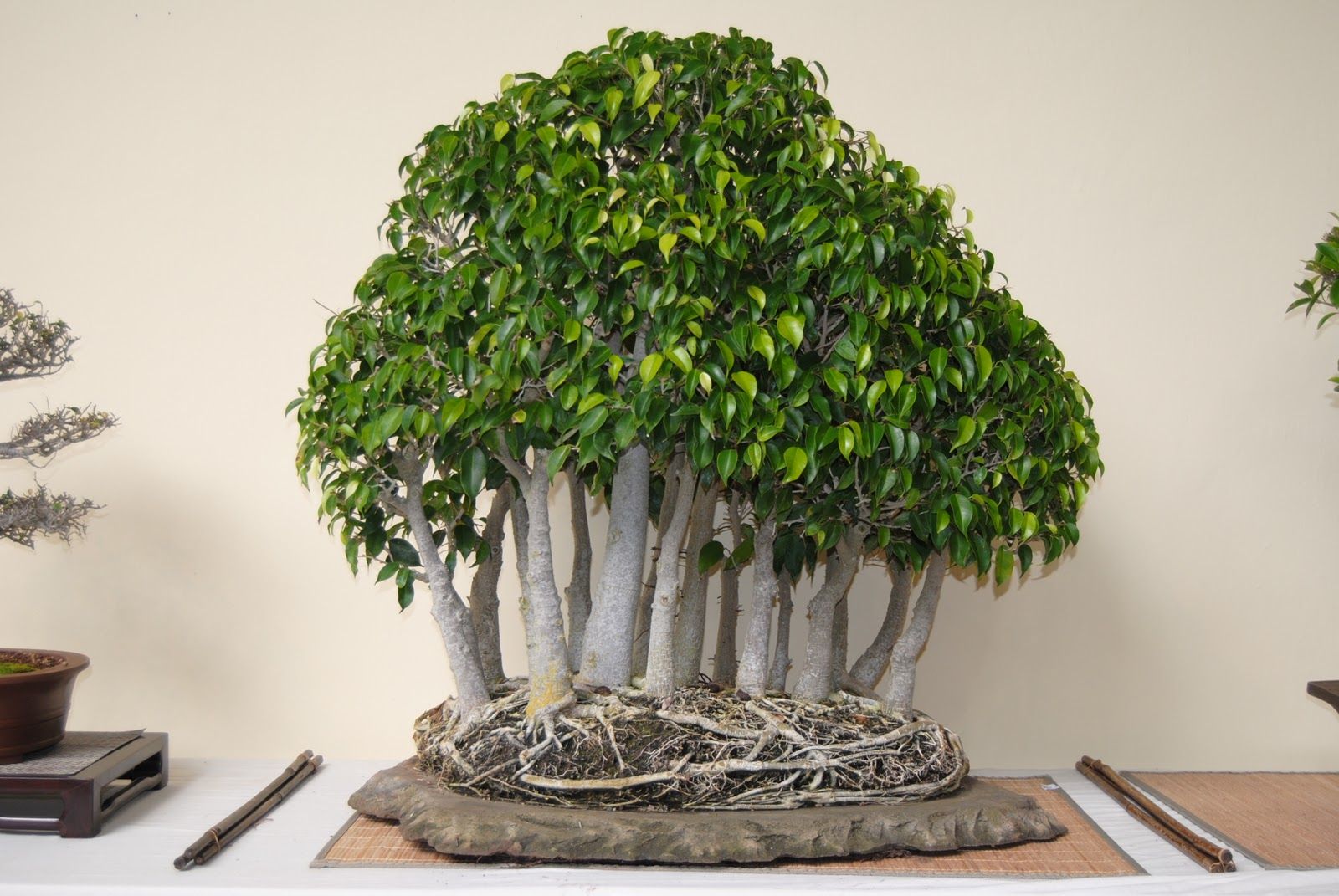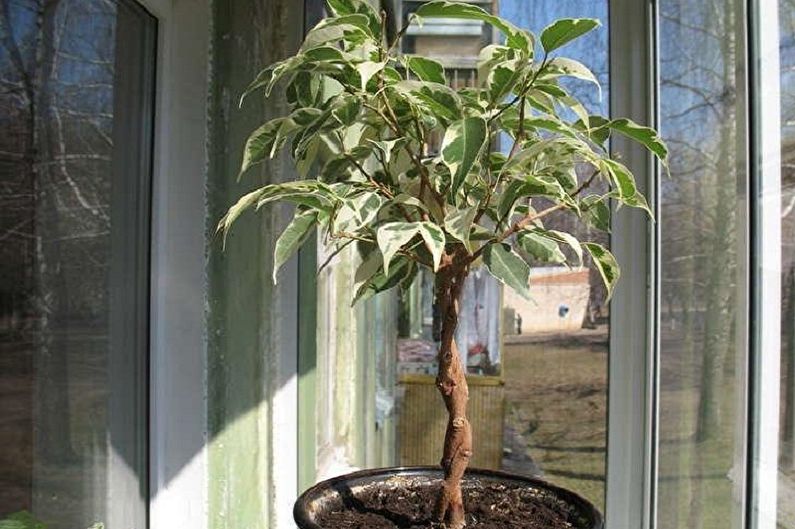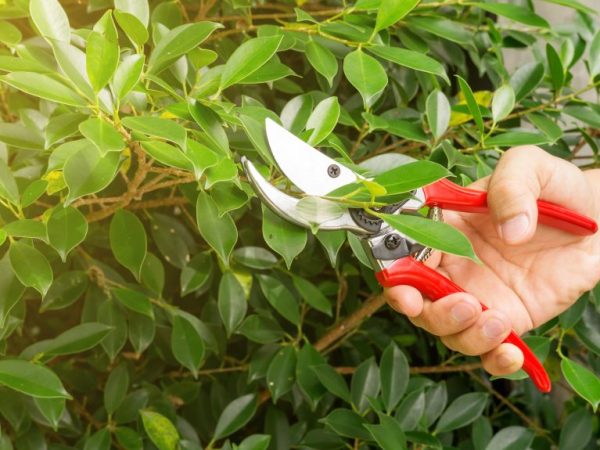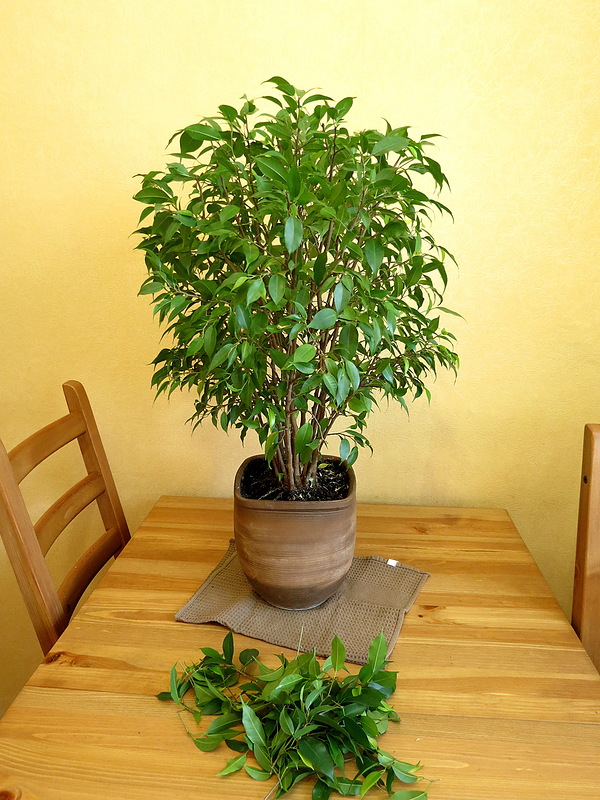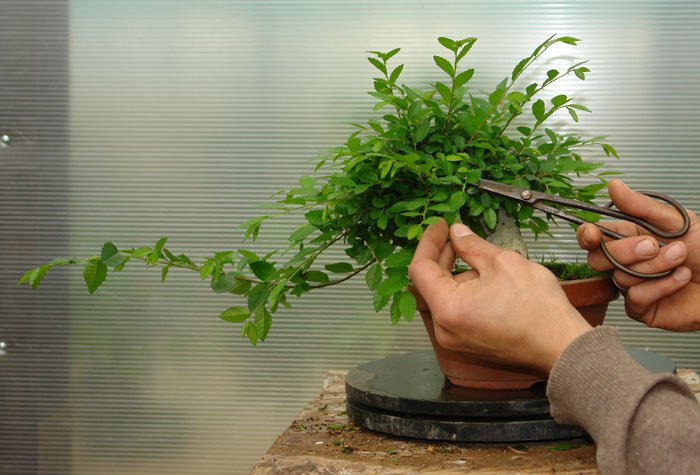Diseases and pests
Ficus "Natasha" most often suffers from diseases such as leaf spot and root rot. But this does not end with the problems of the plant. From time to time, his leaves may turn yellow and fall off. The reasons for this may be:
- uncomfortable air temperature;
- dry air - in hot weather, indoor ficus needs constant spraying, or it is necessary to put a humidifier next to it;
- insufficient watering or excess moisture equally harm the bush. In the second case, the plant is threatened with root rot, which can only be eliminated by surgical methods;
- lack or excess of nutrients is undesirable for ficuses.
Pests of bush ficuses include:
- Shield. Eating on the sap of a plant, it leaves a sweetish discharge on it, on which a sooty mushroom is formed. It makes breathing and plant growth difficult. You can fight them with a soap solution and special preparations. Severely damaged parts of plants are cut off.
- Mealybug. A small white insect, which can be fought in the same ways as with a scale insect.
- Spider mite. Whitish specks and cobwebs on plants, the fault of which is a tiny insect indistinguishable to the naked eye. In the fight against it, you need to use spraying of bushes, because the pest does not like moisture, soapy water or special chemicals.
You may also be interested in the article in which we talk about how to make an original flower pot from an old book.
Ficus Natasha rarely gets sick, and all problems are usually associated with improper care of him. Very often, the cause of a bad condition can only be determined by elimination. Therefore, a new plant, as well as a newly transplanted flower, should be carefully monitored.
As a rule, the main reaction to diseases in ficus is yellowing and leaf fall. This happens in the following cases:
- excess and stagnant moisture.
- improperly selected soil;
- hypothermia;
- lack of sunlight;
- lack of moisture.
Additional Information! Ficus Natasha quickly gets used to a certain place. Therefore, after any action with it, the plant should be returned back.
With sunburn, freezing of the roots, lack of nitrogen in the ficus, leaves can curl inward. The problem is solved by moving the flower to a more suitable place or by applying nitrogen-containing dressings.
In some cases, Natasha sheds the lower green leaves. This may be due to the onset of a dormant period or abrupt changes in the microclimate and insufficient watering. If green leaves began to fall with the onset of autumn, then there is no cause for concern. In other cases, the plant should be moved to a different location and the irrigation system adjusted.
In addition to diseases, ficus can be susceptible to attacks by pests such as thrips, aphids, mealybugs, scale insects and spider mites. But all these problems can be easily solved by regular treatment of the plant crown with insecticides.

Ficus is often sick
Ficus Benjamin is susceptible to many pathologies, which complicates care.
A flower can get sick with a lack of lighting in the winter months, with frequent drafts. The painful condition is manifested by shedding foliage. Also, the leaves turn yellow and fall off when overflowing due to decay of the roots.

Of the pests, the ficus is attacked by:
- aphid;
- shield;
- mealybug;
- mite.
To combat insects, insecticides are used:
- Karbofos;
- Actellik;
- Inta-Vir.
Features and characteristics of ficus
Ficuses belong to the Mulberry family, and most of them are evergreens. The homeland of these ancient shrubs, vines and trees is the tropics of southern Africa and the Mediterranean, as well as the shores of the Indian and Pacific Oceans.
Did you know? From the leaves of the described plant, roofs are made in Central Africa and Mexico, and in India its roots are used to grow living bridges.
At home, erect tree species with one trunk are grown:
- rubber ficus with large, lobed, dark green leaves;
- ficus Benjamin has small bright green leaves with a sharp tip, sometimes with a light border;
- lyre ficus with leaves of original shape and fast growth;
- ficus Bengal can reach considerable sizes, expanding in breadth and height.
The characteristic features of all indoor types are:
- fast growth;
- unpretentious care;
- the need for sufficient lighting - more light is required for variegated leaves, species with dark green leaves are more shade-tolerant;
- the need for high humidity;
- easy propagation by cuttings.
Basic rules for planting a plant
You can use a purchased seedling or propagate it vegetatively. The sequence of actions remains almost the same. Depending on the species and variety, there may be slight differences in the procedure.
For planting a ficus at home to be successful, several conditions must be met:
- choose the right size of the pot, wash and disinfect the container;
- purchase ready-made soil or make up a nutritious, light, drained substrate from available tools;
- make warm water for irrigation, after leaving it for settling for a day;
- prepare a transparent bag or glass jar to create greenhouse conditions;
- strictly follow agrotechnical recommendations.
Preparing the substrate and pot
When planting ficus at home, the right choice of container and soil is of prime importance. The size of the pot during transfer depends on the parameters of the earthen coma. For young seedlings and seedlings, you need to take a small flower pot, while the roots should not touch the walls and the drainage layer, be located 2-4 cm further.
Purchase a ready-made substrate or collect it from sod and deciduous soil, river sand, peat in a ratio of 2: 2: 1: 1. To reduce the risk of root decay, add a small amount of charcoal or ash. Add vermicompost as a nutrient. It is recommended to spill natural materials with boiling water or a solution of potassium permanganate for disinfection before use, bake the sand in the oven.
Procedure technology
The recommended time for the operation is spring, so that the plant has time to get used to the changed microclimate by the cold snap. In autumn and winter, it is permissible to transplant to a new place only if the integrity of the container is damaged, an unpleasant, musty smell from the soil appears, the root system is colonized by pests or the development of diseases
It is important to properly plant ficus in a flower pot
At the bottom, pour a drainage layer of expanded clay with a height of 2 cm. Then add the prepared soil mixture, for a young seedling, fill the container almost completely. Make a small hole, carefully place so that the roots do not bend, sprinkle with a substrate. After planting, water abundantly, removing excess liquid from the pan after 10-15 minutes. To create greenhouse conditions, cover with a transparent bag for a week. Adult specimens do not need this.
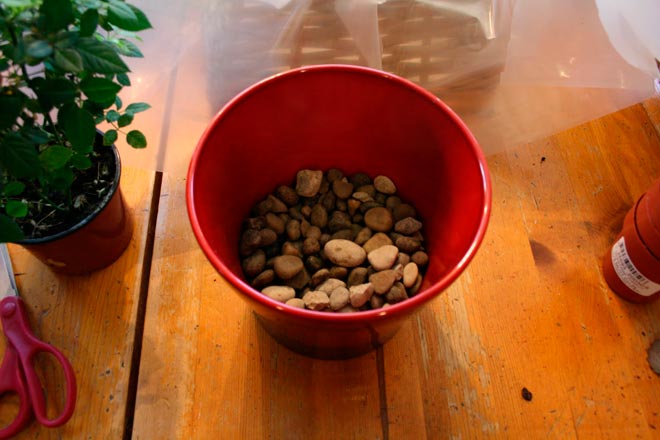
Transfer method
Prepare the container and nutrient soil in the same way. Pour drainage and 3-4 cm of fresh soil at the bottom. The plant in an old container can be slightly watered in advance, knock on the side surfaces so that the earthy clod moves away from the walls of the pot.Turn upside down by gently rolling the container and holding the houseplant. Take out the tree, then the ficus can be planted in a pot. Cover the space between the earthen clod and the walls with nutritious soil.
Do not bury the root collar, place it at the same level, otherwise decay will begin. Water abundantly, drain excess liquid from the pan. Do not worry if the plant sheds up to 30% of the leaves, as this is normal when adapting to a new environment. When transferred to a fresh substrate, it is advisable not to delay, since the root system needs nutrition.
Transplant with soil replacement
This procedure is carried out in 2 cases - the tree is too large to be transferred to a new pot or a disease has arisen, soil pests have appeared on the root system.
If the ficus is planted at home according to all the rules of agricultural technology, it receives timely and sufficient care, such problems rarely arise.
If it is necessary to completely replace the substrate, water the plant abundantly and carefully free the roots from the stuck earth. You can rinse a little in warm water. Remove any rotten, dry or showing signs of infection. Treat with a weak solution of insecticide or fungicide. Plant in a soil mixture prepared in advance.
In case of fungal infections, do not pour too much, spray the aerial part with a solution of the chemical preparation required in this case
At first, the plant will adapt to the new microclimate, so it is important to isolate it from the effects of unfavorable factors - drafts, gusts of wind, direct sunlight
For adult specimens, transplantation is not carried out. It is enough to replace the topsoil with a nutrient mixture. To do this, pour the bush with warm, settled water, remove the old soil by 5-6 cm. Fill with the same volume of the prepared substrate. It is desirable that it has a composition similar to the previous one. After the operation, moisten, remove excess liquid from the pan.
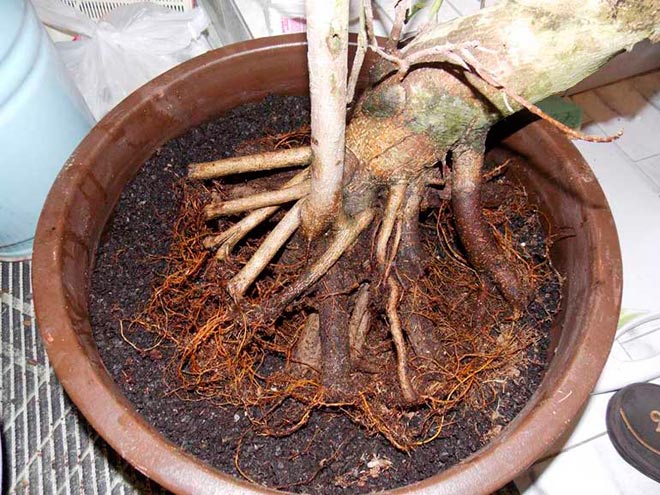
Watering and feeding
It is better to water Natasha in several stages. Thanks to this, it will be possible to achieve an even distribution of the liquid in the ground. Watering must be carried out only with water that has settled at least during the day. The water temperature should be at room temperature.
 It is worth watering the plant with settled water.
It is worth watering the plant with settled water.
Ficus does not tolerate dry land, but excessive watering with water will also be harmful to it. Therefore, it is recommended to pour out the water remaining in the pan after watering, otherwise the roots of the flower will rot and it will die.
If at some point in time the leaves of the ficus began to turn yellow, the reason may be poor watering or a change in regime. All that needs to be done is to help the tree adapt and adjust its watering regime.
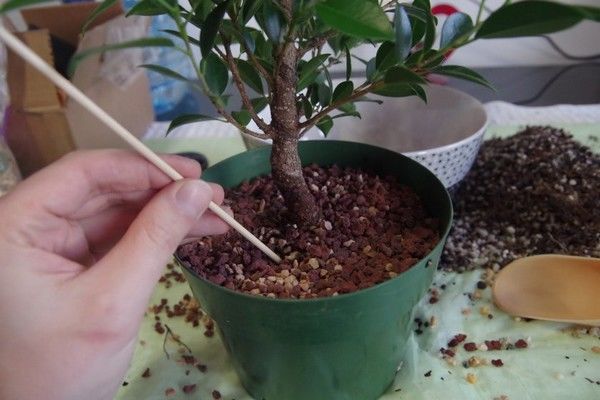 It is better to feed the plant during the period of active growth, i.e. in warm seasons
It is better to feed the plant during the period of active growth, i.e. in warm seasons
It is worth noting that it is not recommended to use various dressings at the same time, since the tree may suffer as a result of this from the fungus.
Possible growing difficulties
The appearance of diseases and pests is often associated with disturbances in the care of the ficus.
Did you know? Feng Shui experts argue that the ficus, located on the southeastern side of the dwelling, will endow its inhabitants with the ability to think wisely and relieve aggression. A copy located in the kitchen will attract money into the house, and growing in the bedroom — relieve insomnia.
Consider the main difficulties that can be encountered when growing this plant:
- If the foliage withers, then it is necessary to moisturize, since this phenomenon occurs due to a lack of moisture.
- Yellowing and leaf fall often occurs during overflow and excessive moisture in the soil. Watering should be reduced and the soil in the pot allowed to dry.
- If the color of the leaves becomes discolored, and the growth of the plant slows down, then it is necessary to feed or transplant the plant with an inspection of the root system.
- Dark brown spots have appeared on the leaves, they fall off - this means a low air temperature in the room. The flower needs to be moved to a warmer room or the air temperature in the place of growth should be increased.
- The appearance of mealy white formations on the underside of the leaf indicates the presence of a mealybug. The leaves should be washed with a sponge soaked in soapy water and the insecticidal preparation Aktara should be applied.
- The appearance of a thin web and blotches of reddish color on the leaves indicates the appearance of a red spider mite. Processing is carried out by means of "Aktara" or "Sunmight". They also increase the humidity in the room, since dry air provokes the development of these pests.
- When brownish growths appear on the leaves, you can guess that the plant is affected by such a pest as the scabbard. The leaves are cleaned with cotton wool soaked in alcohol, or they are treated with an insecticidal agent "Actellik".
If you adhere to all the rules for caring for the Tineke ficus and provide it with all the necessary conditions, then this flower will delight you with its exotic look for a long time.
Difficulties in growing Benjamin Natalie's flower
The most difficult thing is to choose the right place for such a capricious plant. Here are some guidelines for which location to choose:
- air humidity about 50%;
- temperature - 23-25 degrees;
- the distance from the battery is not less than 1 meter;
- far from open windows and doors;
- the entire crown should be illuminated evenly;
- you should not constantly move the pot, since the ficus prefers to be in one place.
Attention! It is important to choose the right microclimate. If the ficus Benjamin Natasha stays in the shade for a long time, he will get sick. With a strong lack of light, the leaves stop growing.
With a strong lack of light, the leaves stop growing.
Quite big difficulties arise due to the fact that it often has to be sprayed and periodically placed under the shower. With the wrong care, it stops growing. There is also a risk of developing various diseases. They develop rapidly, completely destroying the plant.
From time to time you can face such a problem. Leaves may turn yellow:
- Improper watering. Due to the large amount of moisture in the soil. You can try not to water the ficus for a while. Also, you cannot turn the pot. If after 5-7 days there is an improvement, then this is precisely the reason. If there is no improvement, then the plant needs to be transplanted. Some roots will turn out to be rotten. They are removed with a knife.
- Cold. A small draft, a sudden change in temperature, or cold water for irrigation can cause yellow leaves to fall off. So that he does not face the cold.
- Transplanting is stressful, so you need to be prepared for the loss of a few leaves. It is normal that the ficus will need some time to adapt.
- Lack of trace elements. Magnesium, iron and nitrogen are required in sufficient quantities for normal growth and development. Fertilize according to the instructions in spring and summer. Excessive minerals are another cause of yellowing and falling foliage.
- Pests. They are easy to spot upon a superficial examination. It is necessary to get rid of them with fungicides or other poisons.
- Diseases. They are accompanied not only by yellowing of the leaves.
Darkening of the stem
Most often, the trunk darkens due to the following reasons:
- a sharp change in the microclimate;
- the appearance of root rot;
- mealybug and spider mite, which feed on plant sap (requires the use of fungicides).
If there is anything from this list, then the problems are really serious and urgent measures are required to save the plant.
For Ficus Benjamin Natasha, curling of sheets is not the norm, unlike the Baroque variety. The following factors can cause this phenomenon:
- being near the battery in winter;
- high air temperature;
- moisture deficiency or waterlogging of the soil;
- sunburn;
- the use of cold water for irrigation;
- damage by pests or infections.
There are two reasons: improper care or exposure to pests. If the latter are not found, then the potential cause of the curl should be identified and corrected.
Important! The leaves of the ficus are green, without dots. Some pests are small, so they look like a large accumulation of spots on them.
These pests include mealybugs, spider mites, thrips and nematodes. Thus, insects can be found quite easily.
There are more than 800 species of ficuses in their natural habitat. They can be in the form of vines, shrubs, or trees. The plant has been known for a long time, so it is difficult to determine the homeland of its origin. It is believed that this was India, but the flower also grew in the Mediterranean, Australia and China. Subsequently, the ficus began to be domesticated and suitable hybrids were developed for this. One of them was named after the British botanist Benjamin Daydon Jackson.

Ficus Natasha
Useful information! Ficus Benjamin has many popular varieties. The most famous of them are Barok, Anastasia, Natasha, Daniel.
Healing properties
This variety is widely used in folk medicine. On its basis, ointments, tinctures, compresses are made. It is used in the treatment of gynecological diseases. Tinctures help with arthritis and radiculitis.
Important! Any manipulations with ficus must be agreed with the doctor.
Cuttings
Indoor ficuses can be grown from cuttings. This procedure is carried out only in spring and early summer. Apical branches are cut into cuttings.
For planting, you do not need to cut off too long cuttings, as there are too many leaves on them. It will be correct to cut or break off a branch on which there are 3-4 nodes. Broken off shoots need to create greenhouse conditions for rooting - place them in a jar of water and tighten them with a film on top. The cuttings should be kept in a bright and warm room, but never in direct sunlight.
When favorable conditions are created, the first roots will be quickly put down. To accelerate their growth, the water in the jar does not need to be changed, but only topped up. If the stalk feels great in old water and does not rot, then there is no need to change it.

When the root system is well developed on the handle, planting is carried out in separate pots. After that, young plants should be watered abundantly. The second time after planting, the ficuses are irrigated only when the soil in the pot dries well.
Is ficus poisonous?
In addition to negative superstitions, the statement that it is poisonous brought unpleasant fame to the flower. Many people think about this before purchasing a ficus, and therefore it is worth understanding this issue.
Ficus is really poisonous, but only for those who are allergic to such plants. The fact is that in the process of growth, the flower secretes a special milk. Its release contributes to the aggravation of allergic reactions in those who are prone to a similar problem.
In this regard, sometimes the acquisition of a ficus plant in the house becomes a truly undesirable decision, and it is better to replace the indoor flower with another that is not allergic. Otherwise, the secreted juice can cause not only irritation, but also cough and asthma. There were also situations when a person had a fever as a result of an allergic reaction.

Some people may be allergic to ficus
But this does not mean that the plant is dangerous for the rest. No, the flower will only cause problems for those who have an increased sensitivity to the substances contained in Natasha's milk. In all other cases, the plant will not only not be considered poisonous, but will also benefit the house, playing the role of a certain filter.
In the process of growth and development, ficus removes negative substances from the air and produces a huge amount of oxygen.That is why it is recommended to plant a plant in their homes for those who live in large and sufficiently polluted cities with exhaust gases.
Thus, ficus is a tree with a rather versatile "reputation". The choice of which signs to believe in depends only on who decided to acquire this flower. However, it is worth noting that if you believe only in the good and take care of the plant, it will definitely improve the atmosphere in your home.
Features of care immediately after purchase
After buying the ficus, it is necessary to provide proper care, choosing the optimal location and creating a comfortable microclimate. At first, plants need to be installed separately from other flora in the house. This approach will avoid the spread of fungal spores and pests that may be in the soil.
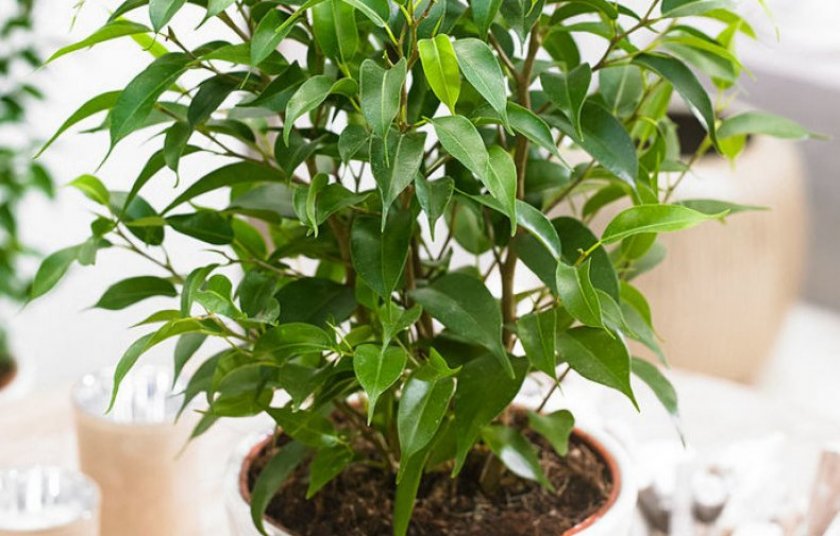
2 weeks after purchase, you need to carry out preventive treatment of the crown from diseases and pests. You can use Fitoverm. The working solution is made by dissolving 5 ml of the substance in 3 l of water. If there are no obvious signs of damage to the crown by pests and fungi, one spraying is enough.
Newly purchased plants definitely need a pick. Transplantation after purchase is carried out a month later, when the plants adapt and get stronger. The pick is carried out with a complete replacement of the earthen coma. You need to pick up a container 5 cm deeper and wider than the old one, with a lot of drainage holes.
The soil can be used standard for ficus, containing sand in the composition. First, it must be roasted in the oven and ash added - 20% of the total volume. 2 hours before transplanting, the soil in a pot with a plant is abundantly moistened.
Read in more detail what should be the composition of the soil for the ficus.
The ficus, together with the earthen clod, is removed from the pot, the roots are freed from the ground and carefully examined for damage. Dried roots must be removed with a sharp pruner. Then the root system is immersed in a bath with a weak manganese solution for 1 hour. After the bath, the roots are dried for 30 minutes by placing the plant on a cotton towel.
A thick layer of expanded clay, about 3 cm, is laid on the bottom of the pot, then there is a sand pillow of the same width. The plant is placed in a pot and aligned along the root collar - it should rise 5 cm above the soil surface.
After sprinkling the roots with earth, they moisten from a spray bottle and set the plant in a permanent place, creating shading. After 3–7 days, depending on the microclimate of the room, the first watering is carried out and the shading is removed.

Beneficial features
This plant is used not only for decorative purposes. The useful properties of ficus include the following:
- Purifies indoor air by saturating it with oxygen. Ficus converts harmful elements into amino acids.
- It is used to treat malignant diseases, articular pathologies, hematomas, gynecological problems. The most useful is the rubbery ficus.
- Used to treat hemorrhoids. To combat the disease, frozen juice is used.
- It is used for the preparation of alcoholic medicines that help with pathologies of the oral cavity.
- Protects the home from negative energy.
Formation of the crown and trunk
In order for Natalya ficus to be of the necessary beautiful shape, the crown should be systematically trimmed, thereby forming it. Basically, the tree is shaped like a ball or trunk. It is recommended to prune the tree at the end of the spring season and early summer. If the plant grows strongly, you can prune the branches at other times. Carry out pruning with a well-sharpened and disinfected tool.
Thanks to cutting, not only the crown is formed, but the plant is also rejuvenated. The main shoots are cut so that they are 20 cm long. Each of them should have up to five leaves. The cut should be done above the rudiment, on thick branches at an angle, on the rest - as convenient.To open access to the rays of the sun deep into the crown, it is advised to cut branches in its middle. After finishing the pruning, it is necessary to process all the cuts with charcoal powder.
It is not recommended to prune many branches at one time, it is better to do it gradually. Lateral shoots, if they have grown 10 cm long, are pinched over the bud, turned outward to the crown, so that they do not stick out to the sides.
Due to the flexibility of the ficus trunks, they can be intertwined in several pieces and give them different shapes. So, for example, by connecting 2 shoots, you can get a spiral, 3 - a pigtail. When the trunks are intertwined, all side branches should be trimmed. The branches begin to weave from the moment the trunks get stronger. Fix them with soft threads, you can woolen
Tighten them tightly, but carefully so as not to overwhelm. Barrels are fixed at an oblique angle of 45 degrees
The winding should be changed every 2 months.
For the formation of a long trunk, for the first time, it is necessary to build a support.
Features of plant care
Tineke ficus care is straightforward. This plant is unpretentious, but you should not neglect the basic rules of care.
Watering rules
Watering the ficus is necessary with settled warm water at room temperature. This should be done when the top layer of the earth dries out. Watering frequency depends on external conditions (temperature, humidity). Usually moisturizing is done 2-3 times a week. In the cold period, watering is reduced to 1 time in 7 days. Watering with cold water is unacceptable.
Important! Ficus Tineke does not like waterlogging - this can cause the appearance of a number of fungal diseases. The plant responds well to spraying with soft water from a spray bottle, especially during the hot summer season
Periodically, you should wipe the ficus leaves with a damp sponge and once a month organize a warm shower.
The plant responds well to spraying with soft water from a spray bottle, especially during the hot summer season. Periodically, you should wipe the ficus leaves with a damp sponge and once a month organize a warm shower.

Top dressing
In order for the Tineke ficus to grow well, it must be fertilized. The plant is fed once every 2 weeks during the active growing season (March-September). For this, mineral fertilizers are used, which can be bought in a specialized store.
You can also use the following fertilizers for feeding:
- A solution of nitrophoska in a ratio of 1 tsp. for 1 liter of water. This solution is poured over the ficus after moistening.
- Infusion of mullein. It is also added to the soil after watering.
In winter, feeding is reduced or minimized.
Pruning
Throughout the year, sanitary pruning is done as needed, removing old, dried or diseased leaves. Periodic pruning of old shoots is recommended to stimulate the emergence of new ones.
Important! On the slices of the Tineke ficus, milky juice appears, which can cause allergic rashes on the skin, therefore, work on pruning the plant should be carried out with protective gloves.
Pruning is also carried out to form the crown, because the plant grows quickly and can stretch to the ceiling. This procedure must be carried out in late February or early March.

Transfer
When the grown Tineke ficus grows cramped in the pot, it needs to be transplanted into a large container. This procedure is carried out in the spring (March-May). Young specimens are transplanted once a year, and adults (over 5 years old) - once every 3 years. A new pot is taken 2-3 cm larger than the previous one, or a little more than the root system.
It can be made of any material, but it must necessarily have a drainage hole. As drainage use expanded clay or broken bricks... Adult large ficuses are not transplanted, but the topsoil is replaced by 3 cm 1 every 2 years.
Also learn how to properly transplant ficus at home.
The transplant is done by the transshipment method as follows:
- Ficus is watered before being removed from the old container.
- A drainage layer is lined at the bottom of the new container, and a little soil is poured on top.
- Then the plant is carefully removed along with the earthy clod so as not to damage the roots.
- The plant is placed in a new container and covered with soil, keeping the flower in an upright position. The soil is tamped a little and made sure that there are no voids.

Crown formation
Ficus Tineke grows quickly, so its growth must be limited and the plant formed. If the flower needs to be formed in the form of a bush, then pinch all the shoots at a height of 10-15 cm. After this procedure, lateral branches begin to grow. When they reach the same length as the rest, they should also be pinched. The shoots that are directed inside the bush are not cut off at first, but when the ficus grows and begins to thicken, they remove excess internal shoots in order to ensure normal illumination of such a bush.
Did you know? In India, in the city of Cherrapunji, a local attraction is the living suspension bridges grown from elastic ficus. To do this, the aerial roots of the plant are directed across a stream or river to the other side.
If the ficus has a well-developed main shoot, then it is formed in the form of a tree. For this purpose, cut off all the shoots, leaving only 3-5 of the top ones. When the ficus grows to the required height, the tip is pinched, and the lateral processes are removed. All cut sites are gently wiped with a cloth and sprinkled with crushed activated carbon to avoid the ingress of harmful bacteria and infections. In order for the shoots to grow evenly on all sides, the pot with the plant should be periodically turned towards the window in different directions in a circle.


